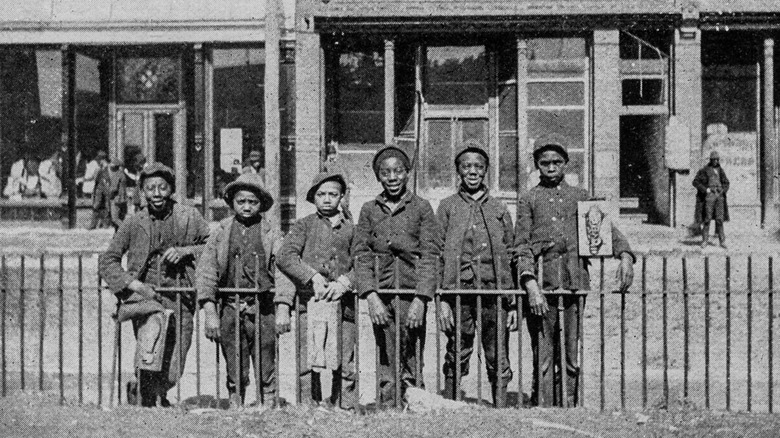Understanding The Racial Wealth Gap In America
The current economy in the U.S. can be difficult to navigate. Between inflation, rising housing prices, and increasing household debt, it can be a struggle just to hold on, let alone accumulate or build any significant wealth. However, for people of color in America, the ability to accumulate wealth has long been a point of contention.
For starters, it's important to realize that wealth can be measured in several ways. While the most popular example is housing, corporate and business equity can be important factors as well. At its simplest, wealth measures the total value of assets that a person (or family owns) minus their debts. This means that not only do things like income inequality in the workplace affect wealth along racial lines, but also policies and discrimination at things like banks, educational institutions, and within the housing market. Between systemic barriers, inequalities, and disparities, people of color have historically experienced less economic security than white Americans. This lack of security has made it significantly more difficult for families of color to accumulate wealth.
While many might think of these inequalities as a thing of the past, the numbers tell us otherwise. Not only do these financial barriers still exist in society today, but in some cases, they're worse. For example, in 1976, 69% of white families owned a home compared to just 44% of Black families. This meant that the homeownership gap at the time was 25%. However, in 2022, the gap had grown to 30% with 45% of Black families owning a home compared to 75% of white families.
Historical factors
From the lack of equitable education opportunities to lower earnings potential on the job market to racial discrimination, it is impossible to point to one singular factor that has created the racial wealth gap that exists in America today. That being said, there have been specific policies that have directly contributed to the gap's persistence. Notably, property-tax-based school funding policies, combined with redlining (that is, the denial of financial services to neighborhoods with minorities), helped to perpetuate racial segregation in the country going back to the 1930s. This segregation, in turn, has negatively impacted communities of color for generations.
Essentially, Black and Hispanic families were forced into lesser neighborhoods, where their lower property tax values ensured poorer educational systems for their children. This, in turn, led to lower educational outcomes for the next generation which (when combined with racial discrimination and hiring bias) factored into fewer opportunities on the job market and generally lower pay. This lower pay and lack of opportunity then dominoed into less homeownership attainment among minority populations as well as fewer business opportunities.
Combining all of this, over the course of several generations, ensured that people of color had substantially less to show, financially, for their years of work. Plus, the lack of equitable financial opportunities to build wealth ensured less financial gain for the next generation. To make matters worse, the situation hasn't improved. According to 2022 research from the Urban Institute, there was over a $1 million difference between the average family wealth for Asian and white families compared to Hispanic and Black families.
The wealth gap today
It's worth mentioning that, while the COVID-19 pandemic was a difficult time for most people, the financial implications for people of color were especially startling. Per the Federal Reserve's 2022 Survey of Consumer Finances, median wealth in the United States increased by $51,800 during the pandemic. However, simultaneously, the racial wealth gap increased for people of color. For Black households, the increase was by $49,950, bringing the total wealth disparity between median white households and median Black households to a whopping $240,120. Meanwhile, Hispanic families fared only slightly better, with a 2022 wealth disparity of $223,390 compared to white families.
In the post-pandemic economy, wealth inequality for the country has only continued. According to inflation-adjusted first-quarter 2024 data from the Federal Reserve Bank of St. Louis, white families represented 66.1% of American households, but owned 84.4% of total family wealth (representing a 28% overrepresentation). Meanwhile, Black families accounted for 11.4% of households but owned only 3.4% of total family wealth (an underrepresentation of 70% given their household share), and Hispanic families represented 9.5% of households but owned 2.3% of total family wealth (a 76% underrepresentation).
Despite all of this, technically, wealth has improved across all racial groups in the United States since the Great Recession of 2009. White wealth has grown 62%, Hispanic wealth has grown 59%, and Black wealth has grown by 51%. While the trajectory hasn't been all negative, the scale of the preexisting gap is such that experts predict it'll take people of color 320 years to catch up.


